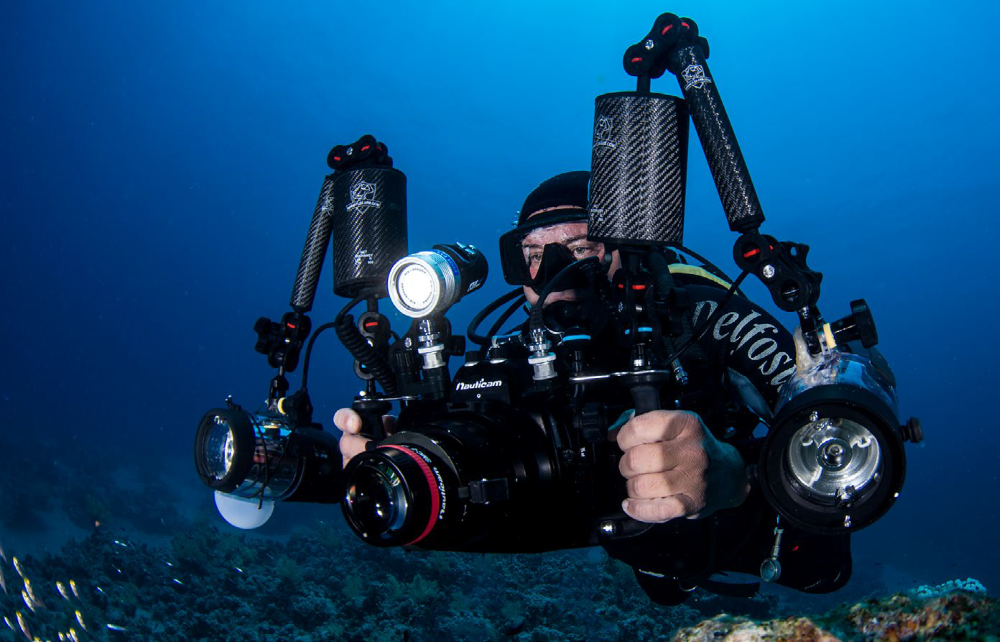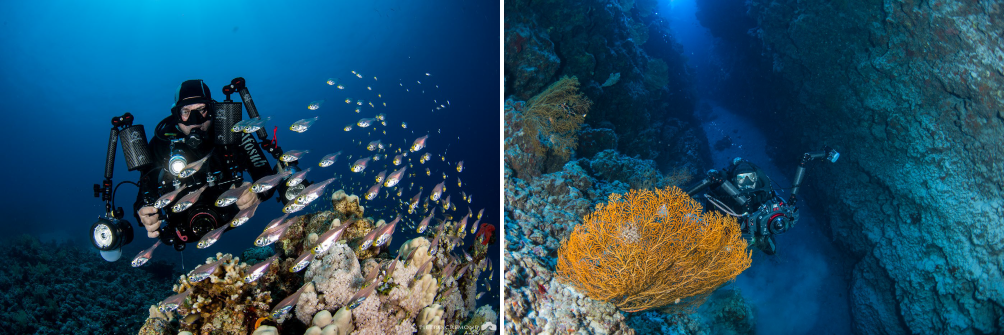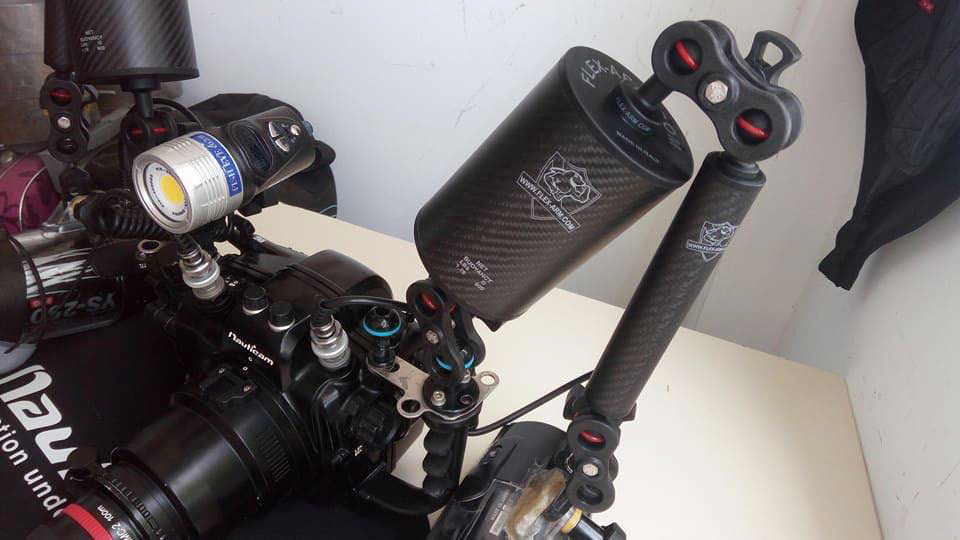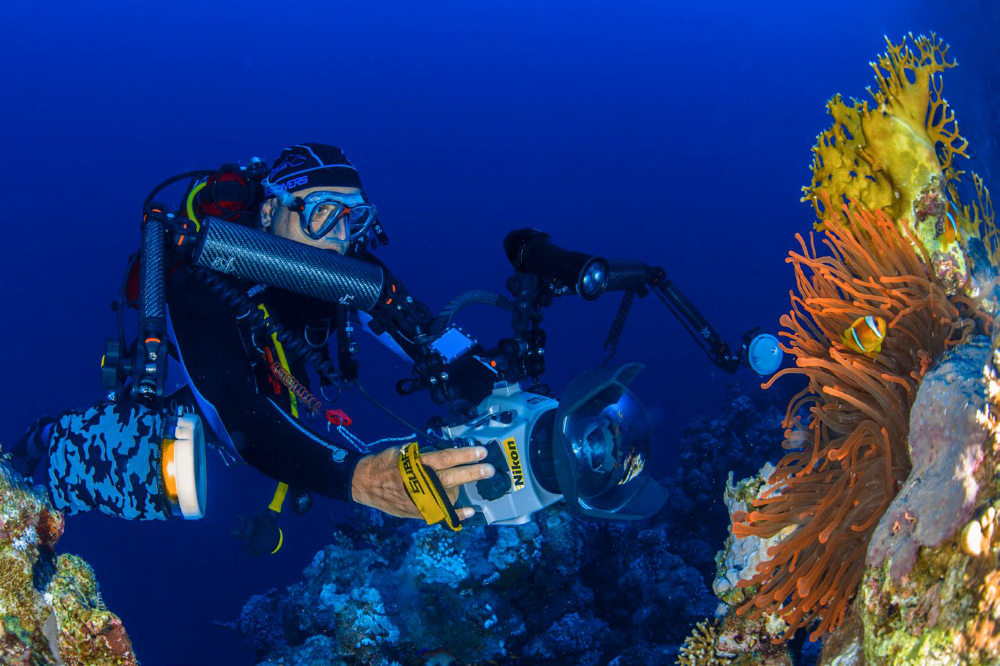
About three months ago, I noticed that a friend of mine was mounting some strange arms on his underwater camera. They looked really good aesthetically, but left me very puzzled…they were the “usual arms” in carbon fiber, but with a peculiarity that made me turn up my nose: both the clamps and the balls were made by plastic.
That’s right: plastic. Franco, my friend, insisted that I tried them and put me in touch with the Italian company building these arms, the Flex-Arm.
The conversation with Federico Amodeo, Flex-Arm’s owner, developed on a level of total sincerity.

I argued from the beginning that his arms and his plastic clamps would not survive my rough handling and my two Sea and Sea 250Pro, big and heavy.
Therefore, he asked me on one side to trust his product, the result of exhausting tests and studies, and on the other to test them, making me understand that if the setup wasn’t satisfactory to me, he would have been happy to accept the challenge to improve it. Within a few days, I choose the configuration for my Nauticam housing for Canon 5DMKIII: 2 beautiful 800g floating arms and 2 normal ones.

How is that possible?
After about two months of testing, where arms and clamps have accompanied me on more than 40 dives, mistreating them purposely, they are still there doing their job very well: when I tighten they block, when I release they are fluid but still gripping, despite my large and heavy flashes. How is that possible? Ok for carbon fiber, but how could all this light-weighted plastic resist my tortures?
Simply because what I rightly called plastic is not that of children’s toys, but a techno-polymer.
As Federico explained me on Skype, with a satisfied smile, this innovative component is now commonly used in “extreme” areas such as Formula 1 and firearms production.

They are replacing metallic alloys with techno-polymer for reasons of reduced weight, chemical resistance, torsion and stress resistance, ease of processing, waste management, possibilities to realize complicated shapes without expensive machining and assembling.
These benefits translate directly into spending cuts, in ever-faster development timelines and greater respect for resources and the environment. I cannot help but be fascinated when an object so often seen as secondary, but so important in underwater photography, is so steeped into studies and science.
Another thing we do not consider is the average weight of a set of 6 clamps and 12 metal balls, virtually cleared by the construction material of these arms, which are undoubtedly technologically avant-garde, easy-to-use and, last but not least, at very low costs compared to any other arm.
More info: www.flex-arm.com
WORDS and PICTURES by Pierpaolo Peluso


















